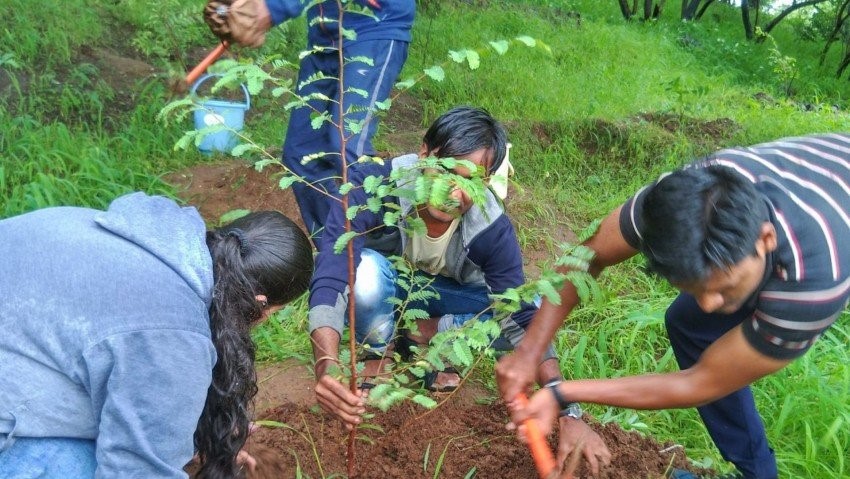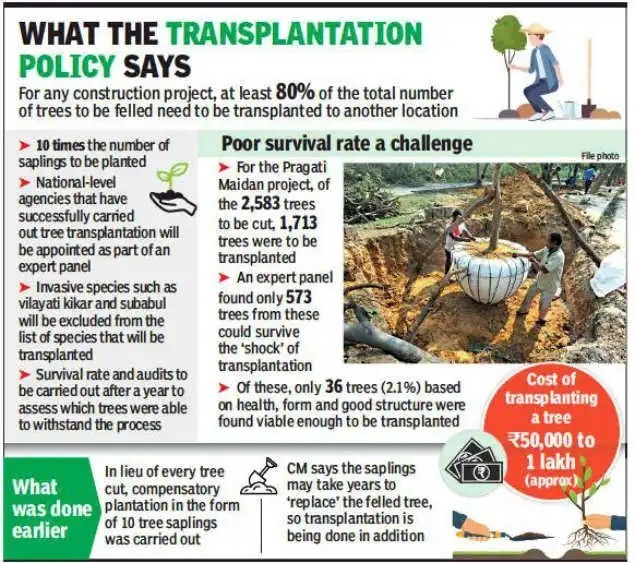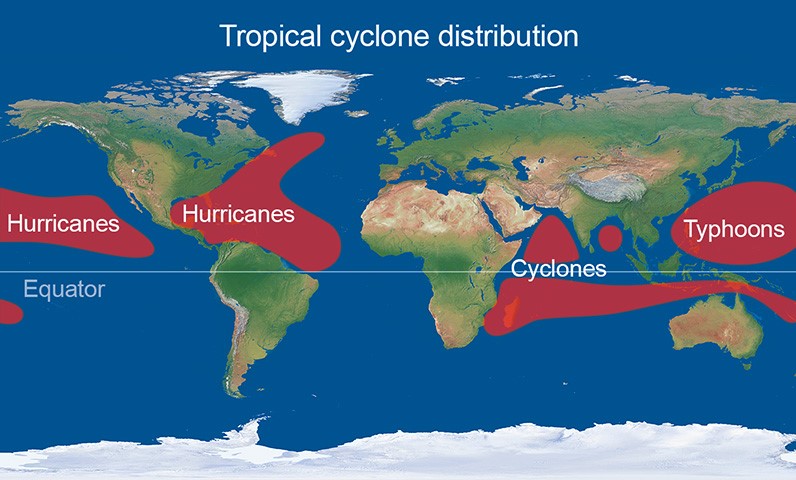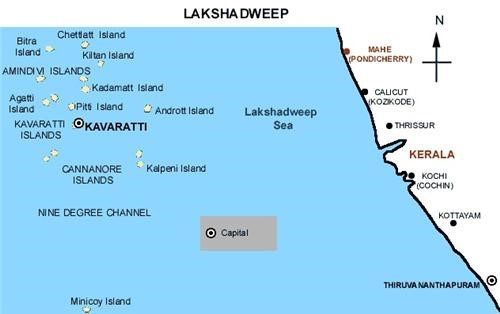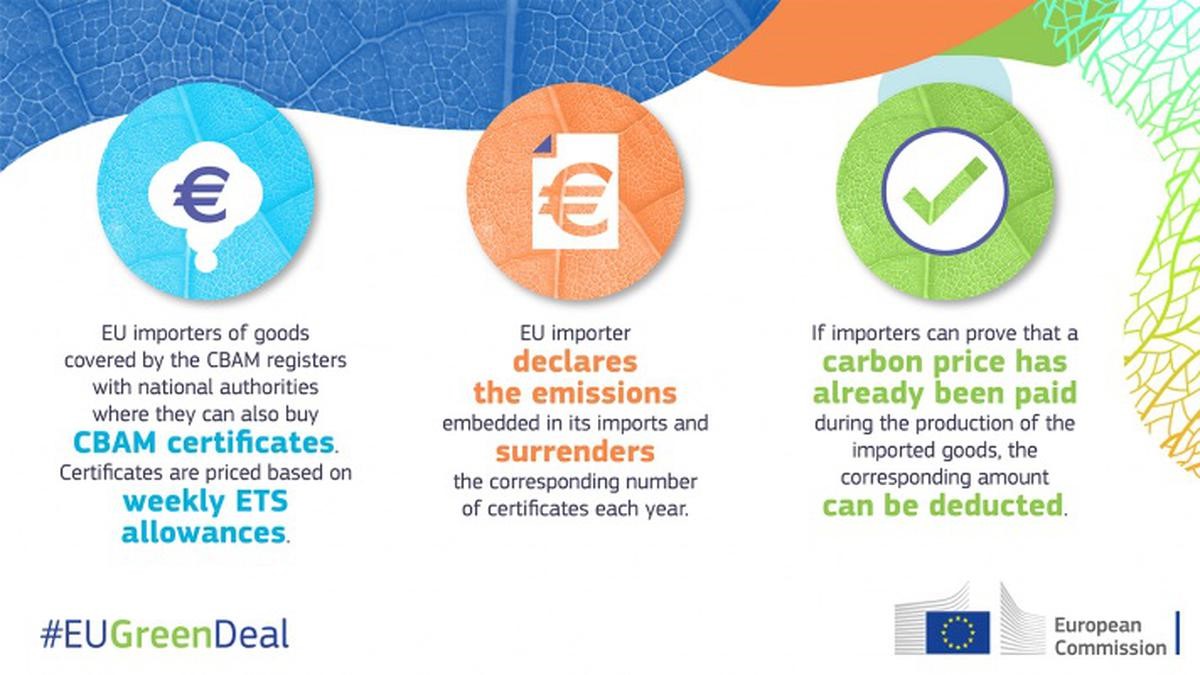1. Rethinking Tree Plantation Strategies in India: A Call for Policy Revision
Introduction
The impetus behind tree planting initiatives by state forest departments in India emanates from a confluence of factors, including the National Forest Policy, global restoration commitments, and central government endeavors such as the Green India Mission.
The allocation of financial resources by the Finance Commission, with a specific focus on enhancing forest cover, further propels states towards expanding their wooded areas.
Geographical and Ecological Context
- Encompassing over three-fifths of India, stretching from the Shivaliks in the north to the Eastern Ghats in Tamil Nadu, the Tropical Dry Forest Biome assumes paramount significance.
- This region, characterized by meager tree cover and an annual rainfall of less than 1,000 mm, is particularly vulnerable to drought.
- Crucially, these landscapes play a pivotal role in supporting rural livelihoods through activities like cattle grazing and harbor endangered fauna such as wolves, striped hyenas, and blackbucks.
Recent Trends in Forest Cover Expansion
- Noteworthy strides in forest cover expansion were witnessed in Andhra Pradesh and Telangana between 2006 and 2015, with Telangana significantly contributing through initiatives like Haritha Haram.
Detection through satellite imagery predominantly relies on the presence of dense plantations featuring fast-growing species like teak, eucalyptus, and bamboo, often surpassing the natural sparse canopy.
Consideration for Tree Plantation
- Deliberate selection of suitable sites, such as public parks, schools, and degraded lands, is imperative for effective tree plantation.
- Emphasis should be placed on areas with adequate sunlight, proper drainage, and ample space for optimal tree growth.
- Prioritizing native tree species, such as neem, banyan, peepal, mango, and teak, ensures adaptation to local climates and promotes regional biodiversity.
- Additionally, the monsoon season (June to September) is identified as the opportune period for tree plantation due to sufficient rainfall facilitating the establishment and growth of newly planted trees.
Challenges and Impacts of Current Tree Planting Practices
- Critiques surround the scientific basis of the 33% forest cover target and the 26 million hectares target under the 2011 Bonn Challenge.
- Excessive tree planting poses ecological threats, leading to the depletion of biodiverse grasslands and scrub ecosystems, adversely affecting pastoral communities and water availability in river basins.
Recommendations for Policy Revision
- While the 15th Finance Commission acknowledges diverse forest canopy densities, it neglects the crucial role of grasslands and open scrub ecosystems.
- Proposing alternative restoration approaches that revert degraded lands to their original grassland or scrub states with native trees is deemed more beneficial than promoting monoculture plantations.
- A pivotal aspect of policy revision involves updating the target forest cover to safeguard grasslands and open ecosystems in their natural state.
Beyond Satellite Imagery for Monitoring
- Relying solely on satellite imagery for restoration programs is deemed insufficient, as tree cover alone does not comprehensively indicate ecosystem health.
- A more holistic approach is warranted for effective monitoring and assessment.
Conclusion
Advocating for holistic approaches is imperative, as a singular focus on top-down tree planting policies may lead to enduring ecological imbalances and inefficient resource utilization.
Striking a balance between ecological conservation and economic goals necessitates a comprehensive revision of tree plantation strategies and forest policies.
Policies should incentivize the preservation of diverse landscapes, including grasslands and scrublands, recognizing their intrinsic ecological and economic value.
2. STUDY ON TROPICAL CYCLONE
Context:
A recent study published in Nature Communications reveals a concerning trend: ocean surface waves induced by tropical cyclones (TC) are on the rise over time.
Key Findings:
- The North Atlantic, eastern Pacific, and North Indian Ocean experience the fastest-growing rates of tropical cyclone wave footprint (17-32 per cent per decade).
- Researchers attribute the increasing wave area as the primary driver behind the global surge in wave energy.
- Across all ocean basins, there is a significant long-term increase in maximum wave height, with the North Atlantic showing the most substantial uptick at 5 per cent per decade.
- The study suggests that the ocean warming triggered by tropical cyclones penetrates deep and can persist for months or even years, affecting ocean circulation patterns on a broader scale and influencing Earth’s climate regulation.
Tropical Cyclone Overview:
- Definition: A tropical cyclone is a warm-core low-pressure system that forms over tropical or sub-tropical waters, characterized by organized circulation.
- Examples: This category includes hurricanes and typhoons, producing high winds, large waves, extreme water levels, and heavy rainfall.
- Main Role: Tropical cyclones play a crucial role in maintaining the energy balance at the air-sea interface by extracting heat energy from the ocean surface for their development.
- Energy Dissipation: Additionally, they dissipate kinetic energy into the ocean through waves.
• Noteworthy Event: Freddy, a recent long-lived tropical system, traversed the Indian Ocean, significantly impacting Madagascar, Mozambique, and parts of southeast Africa with intense rain and flooding.
3. Development of Lakshadweep’s as Unique Cultural Landscape
Introduction:
The recent visit by the Prime Minister to Lakshadweep has propelled these picturesque islands into the forefront of national discourse.
About Lakshadweep:
- Situated in the Arabian Sea, off the southwestern coast of India, Lakshadweep boasts a unique geographical formation shaped by coral activities, featuring a coral atoll structure.
- Established as a Union Territory of India in 1956, it comprises 36 islands, including atolls, coral reefs, and submerged banks.
- Out of these, 10 are inhabited, with Kavaratti serving as the capital and the total land area spanning 32 sq km.
Cultural Uniqueness of Lakshadweep:
- The islands exhibit a fascinating blend of cultural influences from Malayalis, Arabs, Tamils, and Kannadigas.
- Noteworthy is the distinct form of Islam practiced here, reflective of the islands’ diverse ethnic and linguistic heritage.
- Evidence suggests a pre-Islamic Hindu society with traces of past Hindu practices, such as buried idols and traditional songs, hinting at historical roots.
Conversion to Islam: A Gradual Transition:
- The gradual transition to Islam was facilitated by regular contact with Arab merchants and sailors, leading to distinctive Islamic practices on the islands, separate from the mainland.
- The introduction of Islam was characterized by minimal political conflict, primarily through commercial interactions, according to historian Mahmood Kooria.
Cultural Development: Insulation from Mainland Influences:
- In the 16th century, the islands came under the control of the Arakkal kingdom of Kannur, Kerala’s only Muslim dynasty.
- Despite conflicts with European powers during the colonial era, Lakshadweep maintained a degree of protection and isolation.
- The British rule further insulated the islands, allowing their culture to evolve distinctly from mainland India, reflected in linguistic diversity and a matrilineal society.
Matrilineal Society: A Unique Aspect of Lakshadweep’s Islam:
- Lakshadweep’s Islamic society is characterized by matriliny, tracing descent and property through the mother’s line.
- Anthropologist Leela Dube notes the compatibility of matriliny with Islam in Lakshadweep, contrary to conventional Islamic practices.
- The influence of Kerala’s cultural patterns, where matriliny was practiced by Nairs and Namboodiris, is evident.
Religious and Sociological Interpretations:
Islanders justify their matrilineal practice by citing alignment with Islam, referring to Prophet Muhammad’s life with his first wife, Khadija. Dr. N P Hafiz Mohamad emphasizes the integral role of matriliny in the islanders’ Islamic practice.
Conclusion:
Lakshadweep’s relative isolation has played a pivotal role in preserving its unique cultural and religious practices. The islands, with their remarkable integration of various cultural and religious influences, have formed a distinct identity within the Indian subcontinent.
Lakshadweep’s cultural practices, particularly its matrilineal society, serve as a testament to the interconnectedness and diversity of cultures across the Indian Ocean region.
Discussion India’s New ‘Hit and Run’ Law
Introduction:
- In the current scenario, transporters and drivers hailing from diverse regions unite in their objection to Section 106 (2) of the Bharatiya Nyaya Sanhita, 2023 (BNS), which imposes stringent penalties for incidents involving hit-and-run.
- This contentious provision has triggered a wave of demands for its withdrawal or amendment, with protestors issuing warnings of a nationwide strike if their concerns remain unaddressed.
The Protests: Scope and Impact
- The repercussions of these protests extend far and wide, manifesting in roadblocks, injuries to law enforcement personnel, vehicular damages, and concerns about fuel shortages across multiple states.
- In Chhattisgarh, thousands of private bus drivers staging a strike have exacerbated the situation, causing widespread commuter inconvenience and panic.
Protesters’ Concerns and Demands
- Central to the dissent is the apprehension surrounding the severe penalties outlined in the law—imposing up to 10 years in jail and a ₹7 lakh fine for those involved in hit-and-run incidents.
- Transporters argue that the legislation fails to account for the challenging nature of their profession, characterized by long hours of driving, difficult terrains, and external factors such as poor visibility.
- Additionally, there is a prevailing sentiment among drivers that they are unfairly held responsible for accidents and an overarching fear of potential misuse of the law by law enforcement agencies, discouraging individuals from pursuing careers in transportation.
Rationale Behind the New Law
Driven by alarming statistics on road accident fatalities in India and a global surge in road accidents, the legislation aims to establish a deterrent against reckless and negligent driving. The objective is to instill moral responsibility in offenders to report accidents promptly.
Misconceptions and Clarifications
- Contrary to popular belief, Section 106 (2) of the BNS does not explicitly specify a ₹7 lakh fine.
- Furthermore, it is crucial to note that compensation for hit-and-run victims is outlined in Section 161 of the Motor Vehicles (Amendment) Act, 2019, with drivers unable to bear the financial burden of compensation.
Legal and Ethical Considerations
- A critical examination of the clauses within the BNS is imperative to ensure fairness for the substantial number of truck drivers and vehicle operators, exceeding 35 lakhs.
- The existing categorization under the BNS lacks consideration for various contributing factors in accidents, raising concerns about equality and liability. Distinguishing between rash and negligent driving is essential to establish appropriate liability and corresponding punishment.
Way Forward: Proposals for Amendment
- Introducing graded liability and punishment based on the severity of accidents could alleviate drivers’ concerns and enhance the effectiveness of the law.
- Clear delineation of Section 106 (2) applicability exclusively to cases resulting in death due to accidents is imperative.
- For incidents involving minor injuries, alternative measures such as community service, license revocation, or mandatory retests may be more appropriate responses than criminalization.
Conclusion
To resolve the ongoing turmoil, there is a pressing need for clear communication and legal clarity to dispel misunderstandings among drivers. Balancing the imperatives of road safety with fair treatment of transporters is paramount, and the government must strive to enact laws that are just, effective, and considerate of the practical challenges faced by those in the road transport industry.
5. Study revives South Korea Superconductivity claim
Introduction
- Recent research findings from a collaborative team of scientists in China and Japan have unveiled intriguing possibilities pointing towards superconductivity within a material that has been a subject of controversy.
Understanding Superconductivity
- Superconductivity, characterized by minimal electrical resistance, is a phenomenon that holds promise for energy-efficient appliances and lossless power transmission.
The magnetic behaviors exhibited by superconductors contribute to advancements such as MRI machines and high-speed Maglev trains.
Investigation into Material LK-99
- In their exploration, the team focused on LK-99, a substance derived from copper-substituted lead apatite, known for its apatite structure with distinctive tetrahedral motifs.
Superconducting Properties of LK-99
- LK-99 demonstrated vital superconducting characteristics, including almost zero resistance to electric current and the abrupt emergence of resistance beyond a critical current threshold.
- Additionally, it displayed magnetic resilience, maintaining superconductivity even under the influence of a magnetic field until reaching a critical threshold.
Significance of the Meissner Effect
- The researchers noted the Meissner effect in their observations, a phenomenon where materials expel magnetic fields from their interiors upon achieving superconductivity.
- This occurrence in copper-substituted lead apatite hinted at the potential for superconductivity in LK-99.
Quest for Room-Temperature Superconductors
The pursuit of room-temperature superconductors is of paramount importance due to their potential transformative impact on power transmission, medical diagnostics, computing, and beyond, as they allow for the efficient conduction of electricity without losses.
Navigating Controversies in Superconductivity Research
- The realm of superconductivity research has not been without controversies, with previous disputes and contested claims, such as those involving Ranga Dias and a South Korean research group.
- These controversies emphasize the need for careful consideration and validation of findings.
New Study: Methodology and Discoveries
The research team adopted advanced techniques to synthesize LK-99 samples and systematically examined signs of superconductivity, surpassing specific claims from prior studies.
Analysis Through Direct Current Measurements
- Hysteresis experiments were conducted, involving the application and removal of a magnetic field to observe the material’s responses across various temperatures.
- The focus on direct current measurements allowed for the observation of the Meissner effect, as alternating current could disrupt this phenomenon.
Distinguishing Between Type I and II Superconductors
The study contributes to the understanding of superconductors by distinguishing between Type I and Type II based on their responses to increasing magnetic field strength.
Challenges and Constraints in the Study
- The research faced challenges, such as the limited size of superconducting portions in the material, resulting in a low critical magnetic field strength.
- Additionally, interference from cuprous sulphide hindered molecular structure analysis through X-rays.
Moving Forward: Validating Room-Temperature Superconductivity
While the study suggests the potential for near-room-temperature superconductivity in LK-99, definitive confirmation remains pending. Further research is imperative to identify the specific material responsible for superconductivity and enhance synthesis techniques.
6. Understanding the EU’s carbon border tax
Context:
- India’s manufacturing sector faces a substantial hurdle with the introduction of the European Union’s Carbon Border Adjustment Mechanism (CBAM).
- This policy, designed to impose taxes on carbon-intensive imports into the EU, particularly affects vital sectors like steel.
- India’s response involves contemplating legal avenues and engaging in negotiations with the EU, all while concurrently establishing its own carbon trading mechanisms.
Salient Points:
- CBAM is a pivotal element in the EU’s strategy to achieve a 55% reduction in greenhouse gas emissions by 2030.
- India, a significant exporter to the EU, anticipates adverse effects, especially in sectors such as steel.
- India is actively creating its Carbon Credit Trading System (CCTS) to combat climate change and promote investments in clean energy.
Principal Challenges:
- India grapples with safeguarding its industries from potential detrimental impacts of CBAM.
- There is a time constraint to formulate and execute effective carbon taxation measures aligning with the Paris Agreement.
- The EU’s oversight of factors like inexpensive labor and alternative production methods influencing industrial shifts is a challenge.
Essential Terms:
- Carbon Border Adjustment Mechanism (CBAM)
- Greenhouse Gas (GHG) emissions
- Carbon Credit Trading System (CCTS)
- Paris Agreement
- Special and Differential Treatment provisions
Key Expressions:
- “Ill-conceived move” – Characterizing the Commerce and Industry Minister’s critique of CBAM.
- “Death knell for India’s manufacturing sector” – Describing the potential impact of the carbon tax on Indian industries.
- “Common but differentiated responsibilities” – Principle acknowledged under the Paris Agreement.
- “Carbon leakage” – The risk of carbon-intensive production relocating from the EU to countries with lenient environmental regulations.
Key Quotations:
- “Proposed carbon tax on imports is an ill-conceived move… death knell for India’s manufacturing sector.” – Commerce and Industry Minister.
- “India has challenged the CBAM before the World Trade Organization under the special and differential treatment provisions.”
Key Statements:
- CBAM is perceived as a menace to India’s manufacturing sector and competitiveness in the EU market.
- India is actively developing its carbon trading mechanisms, including CCTS and the Green Credit Programme Rules.
Key Instances and References:
- The UK’s intention to enforce its own CBAM by 2027 adds to the challenges faced by India’s exports.
Key Facts:
- In 2022, 27% of India’s exports of iron, steel, and aluminum products valued at $8.2 billion were directed to the EU.
Critical Assessment:
- The EU’s focus on reducing carbon emissions should encompass broader factors influencing industrial shifts.
- India’s dilemma lies in striking a balance between environmental concerns and safeguarding its industries and economic interests.
Future Steps:
- India should engage in proactive negotiations with the EU to explore pragmatic solutions, such as channeling tax funds for green technologies.
Swift action is imperative for India to formulate and implement its own carbon taxation measures in accordance with the Paris Agreement.

